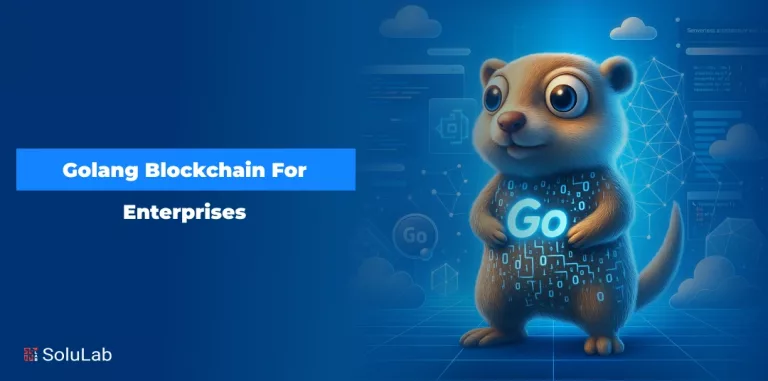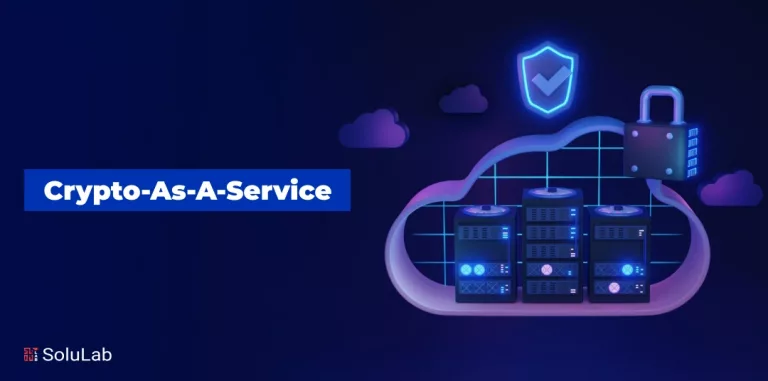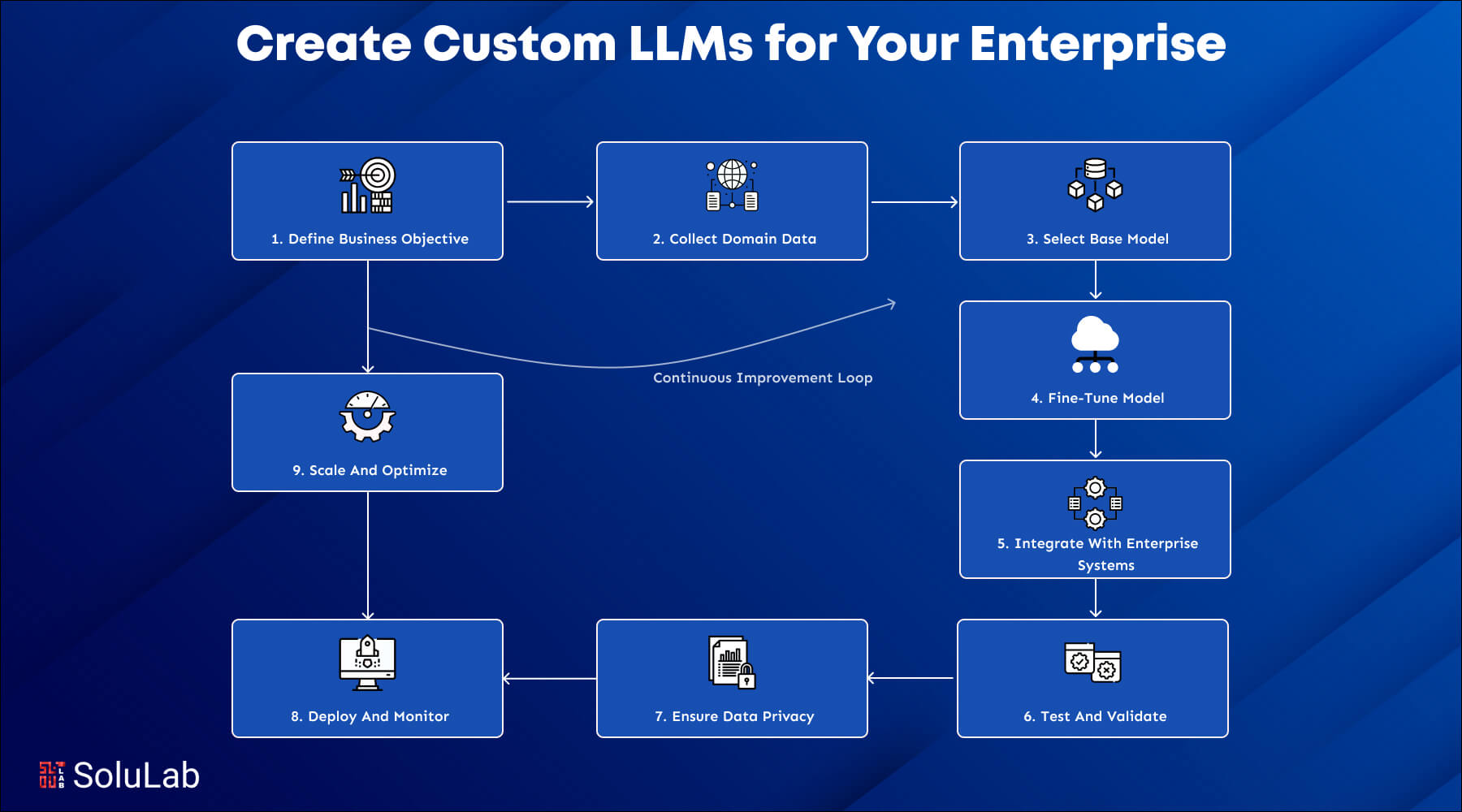
Over the past few years, generative AI has drawn the public’s interest and imagination. Given a natural language cue, these generative models may produce human-quality outputs, such as well-written children’s stories or visuals of product prototypes.
Central to this transformation are large language models (LLMs). LLMs are general-purpose language comprehenders that encode human knowledge and are easily applicable to a wide range of natural and programming language comprehension applications. These consist of summarizing, translating, responding to inquiries, and annotating and finishing code. Currently, as per the latest report, approximately 67% of organizations have integrated LLMs into their workflows, yet only 23% have deployed commercial models in production, indicating a significant opportunity for growth in enterprise-specific applications.
Creating a unique Large Language Model (LLM) may appear to be a challenge for experts with large funds and extensive computational resources. However, with the democratization of AI technology and the wide range of open-source tools and platforms, businesses and even individual developers can now engage in this journey. According to a recent poll, nearly half of organizations anticipate growing their AI spending by more than 25% this year, with 88% already investing in generative AI. This blog post will walk you through the processes necessary to develop your own bespoke LLM, with a focus on practical guidance and real-world examples.
What are Large Language Models (LLMs)?
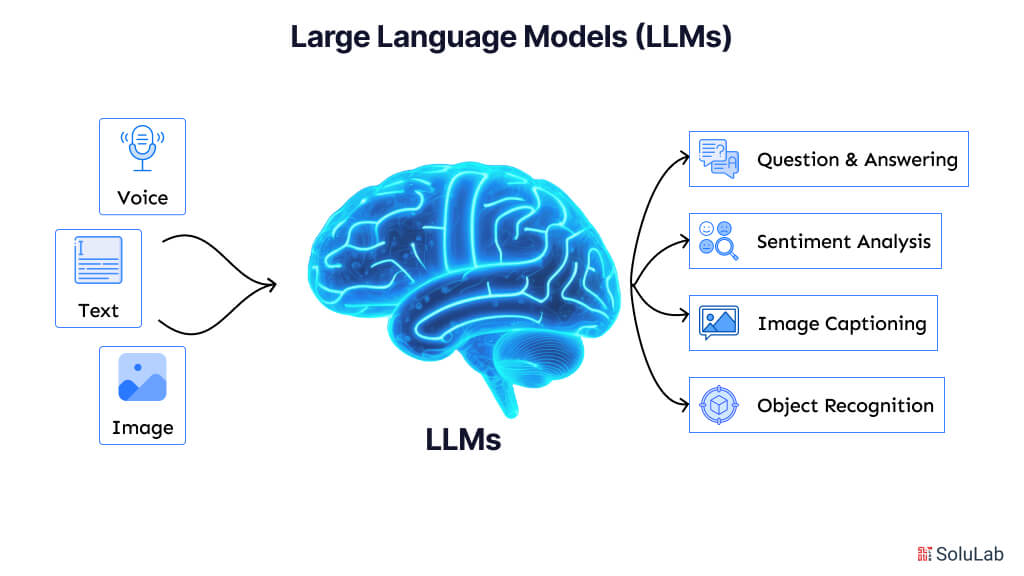
Large Language Models (LLMs) are advanced AI systems trained on extensive datasets of text to understand, generate, and process human language with remarkable accuracy. These models, often based on architectures like GPT (Generative Pre-trained Transformer) or BERT (Bidirectional Encoder Representations from Transformers), excel in tasks such as text generation, sentiment analysis, summarization, translation, and conversational AI.
For enterprises, the potential of LLMs goes beyond general-purpose applications. Enterprise LLMs are tailored to address specific business needs, utilizing domain-specific data to provide highly accurate, context-aware solutions. This customization enables organizations to optimize customer service, enhance operational efficiency, and unlock new avenues for innovation.
LLMs in enterprise environments are transforming industries by automating routine tasks, generating actionable insights from unstructured data, and enabling advanced personalization in marketing and customer interactions. From financial services and healthcare to retail and logistics, large language models enterprise solutions are becoming a cornerstone of digital transformation strategies.
Incorporating enterprise LLMs allows businesses to maintain a competitive edge by utilizing AI that is not only powerful but also adaptable to their unique challenges and objectives. These models are paving the way for smarter decision-making, reduced operational costs, and enriched customer experiences, making them a vital tool for modern enterprises.
How the Large Language Model Works?
Before knowing the process of how to create a custom LLM model for your business, you need to be aware of the working of Large Language Models, and here is the breakdown of it:
- Encoder – The encoder processes, the embedded tokens. It is an essential part that takes the input sequence and extracts pertinent information from it. To comprehend the context and connections between words, the encoder plays a critical role.
- Mechanisms of Attention – This component enables the model to concentrate on particular segments of the original text. It gives various stocks in stiff erring degrees of significance. As a result, improves context, knowledge, and the model capacity to consider word significance.
- Decoder – The output sequence is produced by the decoder using the encoding data. The part converts the information that was processed back into the text that can be read by humans. Additionally, guarantees that the response is logical and pertinent to the context.
- Text Output – The result of LLM’s complex processing is the final generated text. It is predicted on the input as well as the relationships and the patterns that the model has discovered.
General-Purpose LLMs vs. Custom Enterprise LLMs
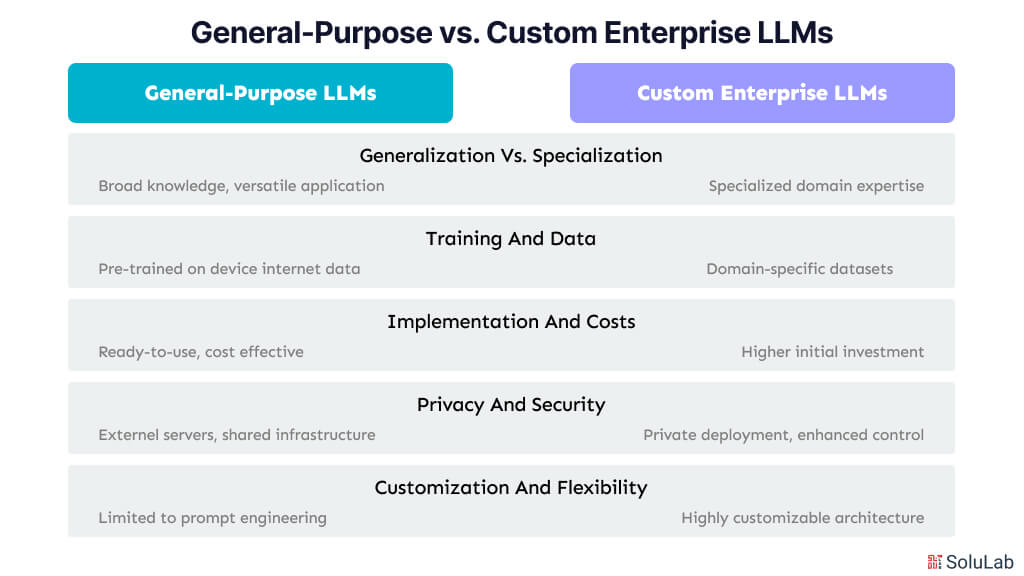
When considering Enterprise AI solutions, businesses often face a choice between utilizing general-purpose Large Language Models (LLMs) or investing in custom Enterprise LLMs. Both options have their advantages, but their suitability depends on the specific needs and goals of the enterprise.
-
General-Purpose LLMs
General-purpose LLMs, like GPT-4 or BERT, are pre-trained on vast datasets and designed for a wide range of tasks, including text summarization, content generation, and sentiment analysis. These models are versatile, easy to deploy, and well-suited for basic language processing tasks across industries. However, they have limitations when applied to specific enterprise scenarios. Their generalized training data can lead to inaccuracies or irrelevant outputs in niche domains where domain-specific knowledge is critical.
-
Custom Enterprise LLMs
In contrast, implementing LLMs in enterprise settings often requires customization to achieve maximum value. Custom Enterprise LLMs are fine-tuned using domain-specific data, enabling them to understand the unique language, terminology, and nuances of a particular industry or business function. These models deliver higher accuracy, relevance, and performance in tasks such as customer service, document analysis, or personalized recommendations.
For example, a custom Enterprise LLM trained in healthcare records can provide precise insights into patient data, while one tailored for the legal industry can process and analyze contracts with unparalleled accuracy. This specificity is not achievable with general-purpose models, making custom LLMs a game-changer for enterprises with specialized needs.
Essential Elements of LLM Solutions
The primary goals of LLM development are optimization, contextual adaption, domain integration, and individualization. This section will examine the main characteristics that propel LLM growth and learn how they work together to produce successful custom LLMs:
1. Customization
To make sure that the model is in line with the objectives of the business and an answer is overall performance, personalization is a crucial component of LLM application development. Businesses can attain better outcomes, such as increased, customer satisfaction, more effective operations, and more profitability, by Modifying the LLM to their unique requirements.
This can be achieved by teaching an LLM plethora of specialized firms, information, including policies, goods, customer interactions, and industry-specific language. This makes it possible for the LLM to adapt and work according to the needs of the business and guarantees that it offers more relevant and useful data that supports the objectives of the organization.
2. Integration via Domain
Certain fields in the information used in the creation of LLM applications relate to the particular business domains. When business is used in particular, LLMs, experience models are trained to understand and apply data information. These particular domain LLMs are trained to precisely follow the rules, regulations, and standards that are exclusive to each organization.
Domain-specific LLMs are improved by employing sets of data as opposed to foundational models, which are trained using vast amounts of unannotated knowledge created especially for domains. This extension is important because specific domain LLMs concentrate on particular skills and tasks that are essential to the company, whereas fundamental models can learn generic patterns from structured data. This produces a comprehension model that can provide insight into a certain firm or industry and make accurate predictions.
3. Adaption in Context
When given a small number of examples or instances about a particular activity, or circumstance, a huge language model can function well. In LLM, this is referred to as contextual learning capability.
One of the essential components of context-based learning is an ology. There are several ways to accomplish this in the field of artificial intelligence, including self-consistency, COT, tree of thoughts, and chain of thought, and this attempts to enhance LLM’s capacity to execute domain reasoning.
Types of LLMs
LLMs can be categorized, according to their specialization, purpose, and transparency, the detailed characteristics and LLM business use cases are clarified by each category. These are the types of large language models that are most frequently used:
-
Open-Source
LLMs that are open-source large language models that have their source code made public be available for use, modification, and distribution are known as open-source models. Research, researchers, and developers can access them, which promotes cooperation and creativity. LLaMa 2, FLAN-T5, RedPajama, Faclon, and Alpaca are a few examples.
-
General Purpose
Many NPL tasks are handled by general-purpose LLM without requiring a great deal of customization. They are adaptable and suitable for a range of uses. Bard, LaMDA, Wu Dao 2.0, BERT, and GPT-3 are some examples of these types of LLM models.
-
Closed-Source
Reliance that are close source are exclusively designed with no public source code. They are created and managed by particular groups. Additionally, licenses are frequently used to grant or restrict access. Claude, Cohere, Gopher, GPT-4, and Jurassic are a few examples.
-
Domain-Specific
Domain-specific LLMs are designed targeted to specific actors or fields, superior effectiveness and precision in specific jobs within those sectors are thus guaranteed. StarCoder, ClimateBERT, BloombergGPT, and Med-PALM are a few examples.
CTA- LLMs fall into a variety of types that are designed for particular purposes and use. Based on our R&D, findings, SoluLab can provide models like GPT3 for the construction of chatbots and digital assistants.
Steps for Creating a Custom Enterprise LLM
Creating a custom Large Language Model (LLM) customized to your business needs involves a structured approach to ensure the model delivers maximum value. Custom LLMs are pivotal in using generative AI enterprise solutions to address domain-specific challenges, enhance operations, and provide precise insights. Below are the essential steps to build private LLMs and implementing LLMs in enterprise workflows:
1. Define the Business Objective
Start by identifying the specific problem your enterprise needs to solve. Whether it’s automating customer support, improving document processing, or personalizing marketing campaigns, clear objectives will guide the development process.
2. Collect Domain-Specific Data
The effectiveness of a custom LLM depends on the quality and relevance of the training data. Gather data specific to your industry or enterprise operations, such as technical documents, customer interactions, or regulatory guidelines. Clean and preprocess this data to ensure it’s ready for training.
3. Select the Base Model
Choose a pre-trained LLM as the foundation for your custom model. Popular options include GPT, BERT, or other open-source models. These serve as a starting point, reducing the need for extensive training from scratch.
4. Fine-Tune the Model
Fine-tuning involves training the base model on your enterprise-specific data. This step ensures the model understands your domain’s terminology and nuances, improving its accuracy and relevance. Techniques like Parameter-Efficient Fine-Tuning (PEFT) can optimize this process.
5. Integrate with Enterprise Systems
After fine-tuning, integrate the custom LLM into your enterprise applications. Use APIs or middleware to connect the model with existing systems such as CRM platforms, knowledge bases, or chatbots, enabling seamless generative AI enterprise functionality.
6. Test and Validate
Thoroughly test the custom LLM to ensure it meets business requirements. Evaluate its performance across use cases, measure accuracy, and gather feedback from end-users. This step helps refine the model and address potential gaps.
7. Ensure Data Privacy and Security
For large language models enterprise deployments, compliance with data privacy regulations is critical. Implement robust security measures, such as encrypted data storage and secure API access, to protect sensitive enterprise information.
8. Deploy and Monitor
Once validated, deploy the model within your enterprise environment. Continuous monitoring is essential to track performance, address issues, and adapt the model to evolving business needs. Regular updates with fresh data ensure the model remains relevant.
9. Scale and Optimize
As the model proves successful, explore opportunities to scale its implementation across different departments or geographies. Optimize its performance with advanced techniques like reinforcement learning to further improve its outputs.
By following these steps, enterprises can successfully harness the power of generative AI enterprise solutions. Custom LLMs provide a significant competitive advantage, enabling businesses to innovate, streamline operations, and deliver exceptional customer experiences through tailored AI capabilities.
Real-World Applications of Custom LLMs
Custom large language models (LLMs) are impacting industries by offering customized solutions that address unique business challenges. The versatility and adaptability of LLMOPs make them invaluable for various applications across sectors. Here are some key real-world applications of custom LLMs:
1. Customer Support and Virtual Assistants
Custom LLMs power chatbots and virtual assistants that provide context-aware, precise responses to customer queries. For instance:
- E-commerce: Assisting customers with product recommendations, order tracking, and returns.
- Healthcare: Scheduling appointments, answering medical inquiries, and guiding patients through treatment options.
2. Legal Document Analysis
In the legal industry, custom LLMs analyze contracts, identify risks, and ensure compliance. They can process large volumes of legal documents with speed and accuracy, reducing the manual workload for legal professionals.
3. Financial Risk Assessment
Custom LLMs assist in identifying potential risks by analyzing financial reports, transaction histories, and market data. They are widely used in fraud detection, credit risk evaluation, and compliance monitoring in banking and insurance.
4. Personalized Marketing and Customer Engagement
In marketing, custom LLMs enable hyper-personalization by analyzing customer behavior and preferences. They help create targeted ad campaigns, dynamic content, and personalized offers, driving higher engagement and conversions.
5. Education and Training
Custom LLMs are used to develop intelligent tutoring systems that provide personalized learning experiences. For example:
- EdTech Platforms: Delivering tailored content and answering student questions in real-time.
- Corporate Training: Enhancing employee onboarding and skill development with AI-driven content.
6. Scientific Research and Development
Custom LLMs expedite research by analyzing academic papers, generating summaries, and identifying trends in data. They are widely used in pharmaceuticals, biotechnology, and engineering to accelerate innovation.
7. Supply Chain Optimization
Custom LLMs analyze logistics data, forecast demand, and recommend strategies to streamline supply chains. This is particularly useful in retail and manufacturing industries, where efficiency and precision are critical.
8. Human Resources and Recruitment
Custom LLMs help HR teams by automating resume screening, drafting job descriptions, and even conducting initial candidate interactions. They ensure faster and more accurate hiring processes.
9. Real Estate and Property Management
In real estate, custom LLMs assist with generating property descriptions, analyzing market trends, and streamlining tenant management. They also facilitate transactions by automating document generation and verification.
10. Content Creation and Localization
Custom LLMs generate high-quality, localized content for global audiences. They can create marketing materials, blogs, and product descriptions while maintaining linguistic and cultural relevance.
By integrating custom LLMs into these real-world scenarios, businesses can drive efficiency, improve decision-making, and deliver exceptional customer experiences. These models exemplify how customized AI solutions are becoming indispensable tools for innovation and growth across industries.
Challenges and Considerations of Custom Enterprise LLMs
While LLMs in enterprise environments offer transformative potential, their implementation comes with challenges that businesses must address to fully realize their value. From data complexities to operational hurdles, understanding these considerations is critical when developing enterprise AI solutions.
1. Data Requirements
Custom LLMs rely heavily on high-quality, domain-specific data for training. Collecting, cleaning, and curating such data can be resource-intensive, especially for industries with limited structured datasets. Ensuring data diversity and accuracy is essential to avoid biased or incomplete outputs.
2. Cost of Development and Maintenance
Building a custom LLM involves significant upfront investment in infrastructure, model training, and expert talent. Additionally, maintaining and updating the model to keep it relevant in dynamic industries requires ongoing expenses. These costs may pose challenges for small or medium-sized enterprises.
3. Integration Complexity
Seamless integration of custom LLMs into existing enterprise workflows and systems can be challenging. Compatibility with legacy systems, APIs, and platforms must be carefully addressed to ensure smooth deployment and avoid disruptions.
4. Data Privacy and Security
For many businesses, especially those handling sensitive information, data privacy and security are top concerns. Deploying LLMs in enterprise applications may involve risks related to unauthorized access or breaches. Ensuring compliance with industry standards and regulations, such as GDPR or HIPAA, is crucial.
5. Scalability
Custom LLMs require significant computational resources, particularly for large-scale operations. As the enterprise grows, scaling these models to handle increased data and user demands can strain infrastructure and budgets.
6. Ethical and Bias Concerns
Training data can inadvertently introduce biases into the model, leading to skewed or unfair outputs. Enterprises must rigorously test and monitor their models to ensure ethical use and mitigate potential risks of discriminatory outcomes.
7. Performance Monitoring and Optimization
Custom LLMs need continuous monitoring to ensure they deliver accurate and relevant results. Fine-tuning and retraining are often required to adapt to evolving business needs, but this demands technical expertise and careful resource allocation.
8. User Adoption and Training
Introducing enterprise AI solutions like custom LLMs may face resistance from employees unfamiliar with AI technologies. Proper training and change management strategies are essential to encourage adoption and maximize the benefits of these solutions.
9. Regulatory and Industry-Specific Challenges
Certain industries, such as finance and healthcare, have stringent regulatory requirements. Ensuring that custom LLMs comply with these standards while delivering value can be a complex and time-consuming process.
Final Words
Custom Large Language Models (LLMs) are changing how enterprises address problem-solving, customer engagement, and operational efficiency. By creating LLMs designed to meet specific business needs, organizations can achieve improved accuracy, automation, and innovation. However, the journey from concept to deployment requires strategic planning, domain-specific expertise, and continuous optimization to ensure success.
At SoluLab, as an LLM development company, we specialize in building enterprise AI solutions that enable businesses to implement custom LLMs effectively. A prime example of our expertise is our collaboration with Digital Quest, a travel business that partnered with us to develop an AI-powered ChatGPT for seamless travel recommendations. This innovative chatbot enhances user engagement and delivers specific travel insights, showcasing how custom LLMs can address industry-specific requirements. Our team of experts ensures that each project is designed to align with our client’s unique goals and needs.
Ready to explore custom LLMs for your enterprise? Contact SoluLab today to learn how our team can help you build AI-driven solutions that drive growth, efficiency, and customer satisfaction.
FAQs
1. How are LLMs created?
LLMs (Large Language Models) are developed by training neural networks on extensive datasets using transformer architectures. The process begins with pre-training the model on large-scale text data to understand general language patterns, followed by fine-tuning on domain-specific data to adapt it to specialized tasks or industries.
2. How to personalize LLMs?
Personalizing an LLM involves adapting it to specific business needs through fine-tuning or prompt optimization. By using domain-specific datasets and aligning the model with organizational goals, businesses can enhance accuracy, relevance, and overall performance for their unique use cases.
3. What are the techniques used in LLM customization?
Customizing LLMs requires advanced techniques like fine-tuning specialized datasets, optimizing with reinforcement learning, or refining responses using prompt engineering. These approaches enable businesses to tailor the model to their unique operational needs while ensuring precision and efficiency.
4. Can you build your own LLM?
Yes, businesses can build their own LLM, either from scratch or by adapting existing open-source models. While resource-intensive, this approach provides complete control over the model’s training and performance, ensuring alignment with specific business requirements and use cases.
5. What is the advantage of a company using its own data with a custom LLM?
Using its own data, a company can enhance security, maintain privacy, and ensure compliance with industry regulations. A custom LLM trained on internal data delivers highly relevant results while minimizing risks associated with exposing sensitive information to third-party platforms.




